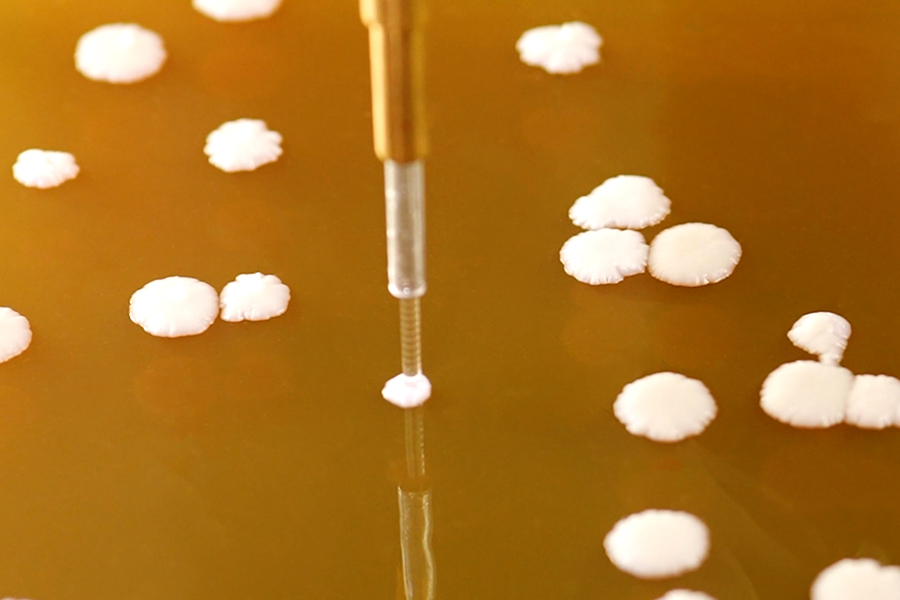PIXL’s LATEST BETA WORKFLOW
Streamline analysis
of inhibition assays with PIXL
When screening thousands of isolates, manually measuring zones of inhibition can pose a bottleneck to the discovery of antimicrobial compounds. However, PIXL’s workflow for zone of inhibition analysis enables faster screening without sacrificing accuracy or reliability.
Create a colony picking protocol in minutes
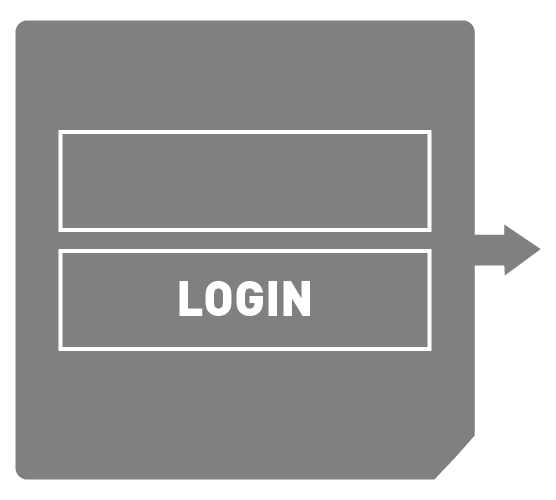
1. Login
Individual user logins, remembered user settings, templates and logs user actions and parameters.
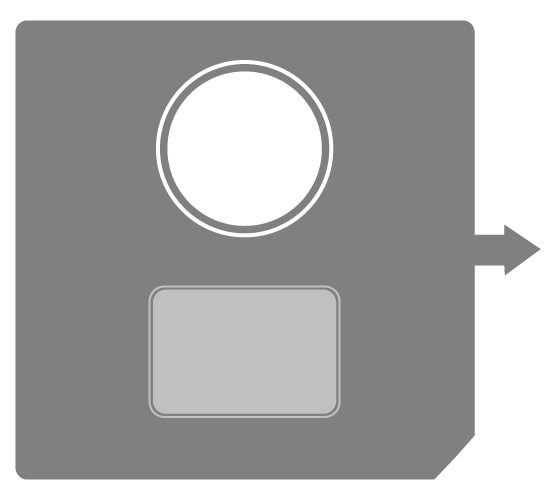
2. Select the plate
Petri or PlusPlate. Pick from the whole plate or define sectors of interest.

3. Detect Zones
Automatically locate central colonies and measure their inhibition zones

4. Refine Zones
Automatically locate colonies of interest for picking.

5. Choose colonies
Filter selected colonies by size, colour, and shape.

6. Select target plate type
Select the number of replicates; on any density, in any pattern, agar, or liquid.

7. Pick colonies
Review your workflow, estimated time, and number of plates required, then press go and walk away.
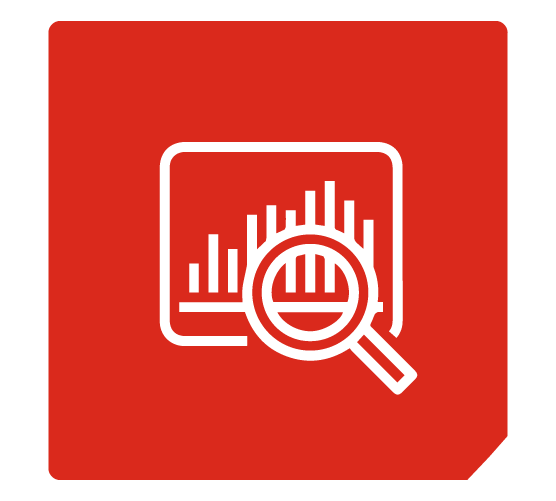
8. Export data
Review your workflow, estimated time, and number of plates required, then press go and walk away.
Integrate your zone of inhibition analysis with PIXL
and gain a multitude of benefits
EFFICIENTLY SCREEN COLONIES
FOR ANTIMICROBIAL ACTIVITY
Intelligent detection algorithms enable automatic calculation of radii measurements of inhibition zones. By refining selected zones based on size, shape, proximity, and overlap percentage, you can efficiently screen and pick the most promising isolates with antimicrobial potential.
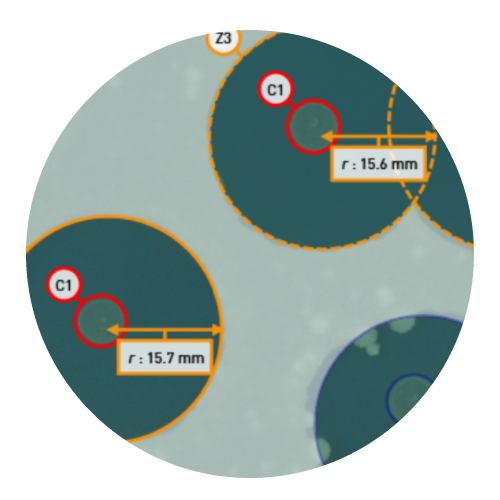
Rapidly isolate and purify
strains of interest
By using PIXL to isolate colonies based on their morphological characteristics, such as size, colour, and shape, it is possible to quickly identify and pick strains from environmental samples for further cultivation and analysis.
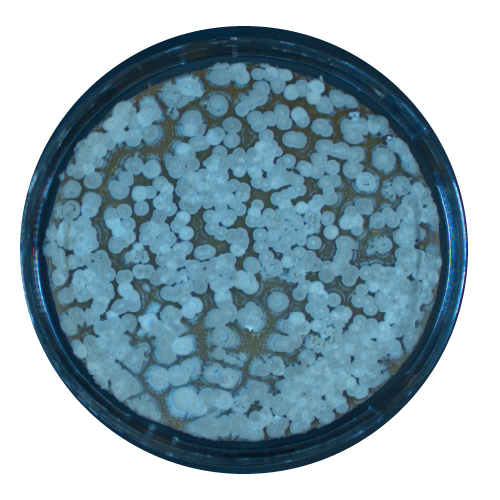
Effortlessly pick diverse microorganisms
Out of the box, PIXL is compatible with even the most diverse microorganisms, without the requirement for additional expensive hardware. 2D and 3D mixing of the nozzle head ensures enough colony material is picked for inoculation.

Why PIXL?

Maintain Sterility

Agar Sensing

Filter Zones

Colony Selection

User-friendly
Which PIXL set-up is right for you?
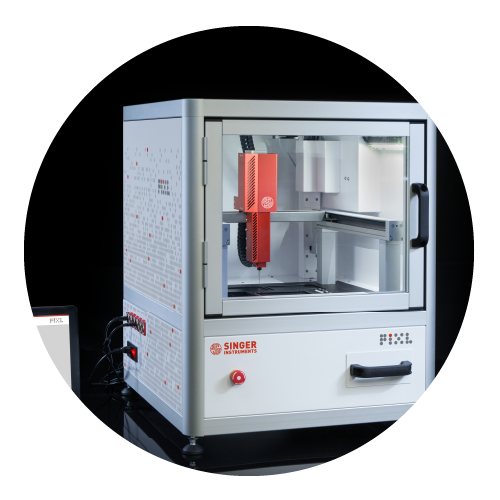
PIXL
For those interested in selecting aerobic
microorganisms, a standard version
of PIXL is available.
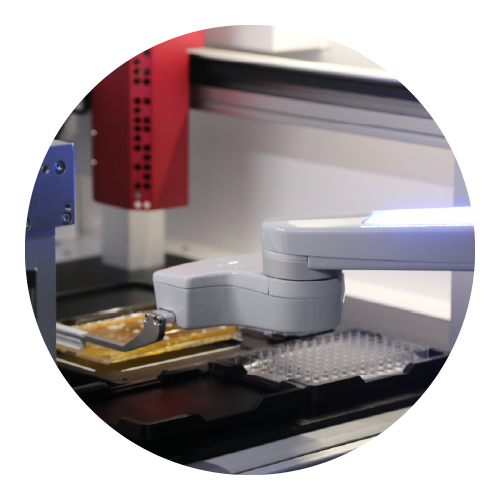
AUTOMATION-READY
PIXL
PIXL, equipped with a light curtain that can be easily integrated with various robotic arm providers..
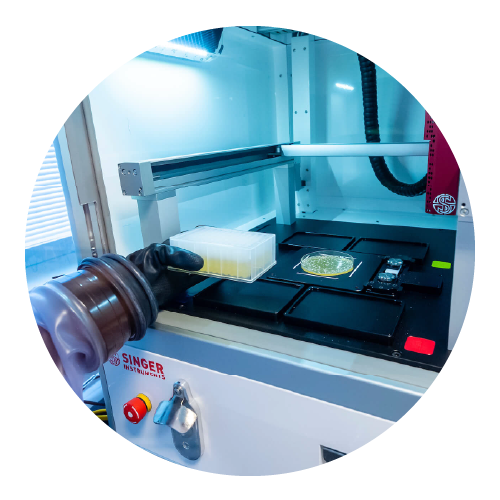
PIXL WITH ANAEROBIC CHAMBER
A customised anaerobic chamber designed for PIXL with user experience in mind, making integration seamless.
Featured Resource
Frequently Asked Questions
90mm Petri dish and OmniTray SBS rectangular plate can be used as source plates for the zone of inhibition workflow. However,
more plate types are supported in other PIXL workflows such as Random colony picking.
Yes, you are able to run the zone of inhibition workflow to image and export rich phenotypic data on each colony and inhibition zone.
The radius is measured in millimetres from the centre of the colony to the edge of the clearing zone.
PIXL’s intelligent algorithm can detect inhibition zones with an overlap of less than 20%.
Yes, PIXL will detect secondary colonies inside the inhibition zones.
Yes, PIXL is able to pick secondary colonies inside the inhibition zone.
Get in touch
Our product experts are on hand to answer your questions about our robots and scopes.
Whether you want to explore your workflow needs, get a quote, request a live demo,
or geek out about science.
